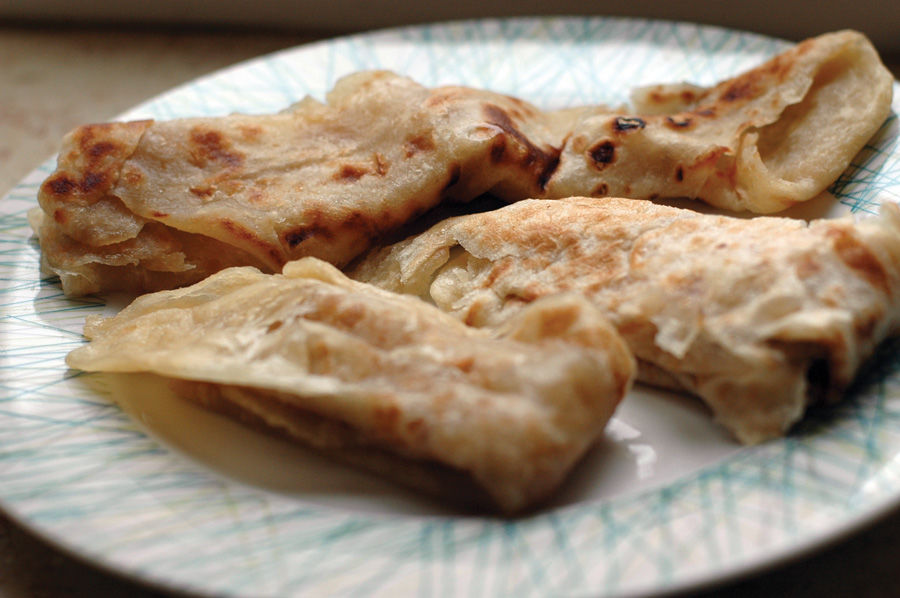North African tradition warms day after Passover
Published March 22, 2018
When we’re all busy preparing for Passover, it takes chutzpah for me to focus on the day after Passover, right? But I recently learned of a joyous North African tradition that takes place the day after Passover. It’s called Mimouna, and for me it is a lovely example of how people of varied backgrounds and religions can come together to celebrate in friendship and mutual respect.
The origins of Mimouna, a tradition dating back hundreds of years, are unknown. Some surmise that the Jews of North African descent welcomed Muslim neighbors to their homes to herald the beginning of spring and to thank them for keeping their chametz (leaven) during the holiday. The neighbors would bring the flour, which was forbidden in Jewish homes over Passover, and the Jewish hosts would prepare the treats.
Vered Guttman, a distant relative of mine who was born in Israel and lives and writes in Washington, D.C., suggests that Mimouna may have been the name of an ancient Moroccan goddess of good fortune.
ADVERTISEMENT
“It is believed that the food offerings presented to her were meant to bring good luck to the entire house,” she writes. “Traditionally, the many guests attending the celebration would taste the food, but it was really offered to La Mimouna, the goddess, wife of the black demon Mimoun. No meat is served during Mimouna, nor are sour, salty or even black foods such as coffee, for fear of bringing bad luck.”
Originally in North Africa but now elsewhere, the Mimouna tables are laden with dishes of couscous (whose many grains symbolize prosperity), fresh vegetables (symbolic of a prosperous agricultural season), and a variety of sweet desserts featuring honey, dates and almonds, all symbols of abundance and happiness.
Many Jews from Morocco, Egypt and Sudan immigrated to Israel and brought this beautiful tradition with them. Today in Israel, Mimouna is an annual celebration with Israelis of all backgrounds coming together in homes, at city parks and on Tel Aviv’s beautiful beaches.
ADVERTISEMENT
If you would like to host a Mimouna party, one of the many traditional foods served at the celebration are mufletas, which are thin pancakes rolled with butter and honey, a recipe for which I have included below. You could also include stuffed dates, assorted dried fruits dipped in chocolate, a basket of red and green grapes, a platter of assorted individual teacakes and pastries and a sweet bread shaped around a gold coin.
* * *
And now a little kibbitzing about your seder menu. While it is meaningful to honor your family’s seder meal traditions, there is an important difference between tradition and Talmudic law. Other than the symbols on your seder plate or the need to eat unleavened bread (matzah), nothing else is mandated. In other words, you can be creative.
I spoke with Debbie Bram, director of Jewish education at Congregation Shaare Emeth, who told me about the sole biblical direction regarding food on Passover: “We are taught in Exodus 12:15, ‘Seven days you shall eat unleavened bread: On the very first day, you shall remove leaven from your houses.’ ”
This has raised the question of whether beans, legumes, peas, rice, millet, corn and seeds (collectively known as kitnayot) qualify as leaven. As Bram explained: “Talmudic rabbis permitted these foods to be eaten during Passover. However, many Ashkenazic Jews do not follow that practice.”
Hence, you have more flexibility during Passover than you may have realized. For example, the Talmud says nothing about gefilte fish. Instead, it is a tradition invented by Ashkenazi Jews as an economical way to feed a large crowd from a single fish. If your family members are not fans, don’t serve it.
However, if you want to truly honor the gefilte fish tradition, you would need to honor it in the traditional way. What does that mean? Ready? Buy one large live fish, allow it to swim for two days in your bathtub, then kill, gut and skin the fish, leaving the skin intact. Combine the flesh of the fish with matzah meal, eggs, onions and spices, stuff the mixture back into the fish skin, simmer it in a large pot, let cool, slice and serve.
Any takers?
Same with matzah meal. Nothing in the Talmud commands you to use matzah meal. There are plenty of wonderful Passover baking options that use neither flour nor matzah meal. I’ve included below two such Passover-friendly cookie recipes, an unusual and tasty charoset, and a delicious carrot dish with a North African sauce. One or more of these options might even become part of your family’s Passover traditions.
Chag Sameach.
Margi Lenga Kahn is the mother of five and grandmother of five. A cooking instructor at the Kitchen Conservatory, she is working on a project to preserve the stories and recipes of heritage cooks. She welcomes your comments and suggestions at [email protected].
















